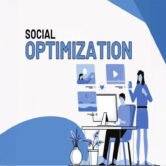
Introduction to content marketing frameworks
Introduction
Content marketing has emerged as one of the most influential strategies in the digital age, empowering brands to connect with audiences through valuable, relevant, and consistent content. However, achieving success with content marketing is not just about creativity; it requires structure, planning, and alignment with business goals. This is where content marketing frameworks come into play. These frameworks provide a systematic approach to planning, creating, distributing, and measuring content. They ensure consistency, strategic alignment, and measurable outcomes across all stages of the content lifecycle. Understanding content marketing frameworks is essential for businesses aiming to scale their efforts, improve ROI, and create long-term customer relationships.
Definition of a content marketing framework
A content marketing framework is a structured model that guides the planning, execution, and management of content strategies. It includes key stages such as audience analysis, content ideation, content creation, distribution, and performance evaluation. By organizing these elements, businesses can streamline processes, reduce redundancy, and align content with specific marketing and business goals. These frameworks serve as roadmaps that help marketers focus on strategic outcomes rather than ad-hoc content creation.
Importance of strategic alignment
One of the core benefits of a content marketing framework is its ability to ensure alignment between content efforts and broader business objectives. Without a structured approach, content creation can become fragmented, inconsistent, and ineffective. A solid framework links content topics to the brand’s mission, target audience needs, sales funnel stages, and key performance indicators. This alignment ensures that every piece of content plays a role in guiding users through the customer journey, whether it’s building awareness, nurturing interest, or prompting conversions.
Audience-centric content development
A robust content marketing framework begins with a deep understanding of the audience. This involves creating detailed buyer personas, identifying their pain points, goals, and content consumption habits. Audience insights help shape content themes, formats, and distribution channels. A good framework includes continuous audience research to ensure content remains relevant and valuable. Personalization and relevance become easier when audience data is integrated into the content strategy.
The content lifecycle model
Most content marketing frameworks follow a lifecycle model that encompasses planning, creation, publishing, promotion, and measurement. During the planning phase, marketers identify goals, assign roles, and build content calendars. The creation phase focuses on generating high-quality content assets, while publishing ensures they are launched across the right platforms. Promotion amplifies reach through social media, email, and paid ads. Finally, performance measurement evaluates content against KPIs like engagement, leads, and conversions. This cyclical model encourages continuous optimization and learning.
Content funnel strategy
Content marketing frameworks often map content to different stages of the marketing funnel: top (awareness), middle (consideration), and bottom (conversion). At the awareness stage, content such as blogs and videos attract new visitors. In the consideration phase, case studies and webinars help users evaluate solutions. At the bottom of the funnel, product demos and testimonials encourage purchase decisions. Aligning content with the funnel ensures the right message is delivered at the right time to the right audience.
Channel planning and distribution
A key element in content frameworks is deciding where and how to distribute content. Different platforms serve different audience segments and content formats. A strategic distribution plan might include blog hosting, YouTube for videos, LinkedIn for B2B content, Instagram for visual storytelling, and email newsletters for nurturing. The framework defines publishing frequency, repurposing strategies, and platform-specific goals. Distribution planning maximizes visibility and engagement by placing content in front of the right eyes.
Content governance and workflow management
As organizations scale content efforts, governance becomes critical. Content marketing frameworks outline workflows, approval processes, editorial standards, and brand guidelines. These elements ensure consistency in voice, tone, and quality across all content assets. They also clarify roles and responsibilities, reducing bottlenecks and duplication of effort. Workflow tools and editorial calendars are often embedded into frameworks to support seamless collaboration among content creators, designers, and marketers.
Performance measurement and analytics
Measurement is a cornerstone of any effective content framework. It involves tracking key performance indicators (KPIs) such as traffic, bounce rates, time on page, conversion rates, and social engagement. Analytics tools like Google Analytics, HubSpot, and native social media insights provide data to assess content impact. A good framework includes mechanisms for regular reporting, A/B testing, and iterative improvements based on data. These insights inform future strategies and content priorities.
Examples of popular content frameworks
Several recognized content marketing frameworks help guide strategy. The Hero-Hub-Help model, popularized by YouTube, segments content into three types: hero content for brand awareness, hub content for regular engagement, and help content for answering specific queries. Another example is the 5W1H approach (Who, What, When, Where, Why, and How) for content planning. The Content Pillar model involves creating cornerstone pieces of content that are broken into smaller, related assets. Each framework can be tailored based on business size, industry, and goals.
Benefits of using a structured framework
The advantages of implementing a content marketing framework are numerous. It improves efficiency, ensures content relevance, enhances collaboration, and enables measurement of ROI. Teams are more focused, messaging is more cohesive, and the user experience becomes seamless. A structured approach reduces guesswork and allows marketers to act with intention, resulting in higher engagement, lead generation, and brand loyalty.
Conclusion
Content marketing frameworks are essential tools for creating strategic, consistent, and impactful content. They provide a structured path from planning to execution to evaluation, enabling businesses to align content with audience needs and business goals. By leveraging frameworks, brands can elevate their content game, maximize their resources, and drive meaningful engagement throughout the customer journey. In an increasingly crowded digital landscape, having a well-defined framework is not just beneficial—it’s a competitive necessity.
Hashtags
#contentmarketingframework #digitalstrategy #contentlifecycle #marketingfunnel #audienceresearch #contentgovernance #strategiccontent #contentstrategy #contentdistribution #buyerpersona #contentanalytics #digitalmarketingtools #inboundmarketing #contentpillars #herohubhelp #marketingworkflow #editorialcalendar #brandedcontent #contentplanning #performancecontent #marketingroi #contentinsights #marketingmetrics #strategicframework #contentmanagement





